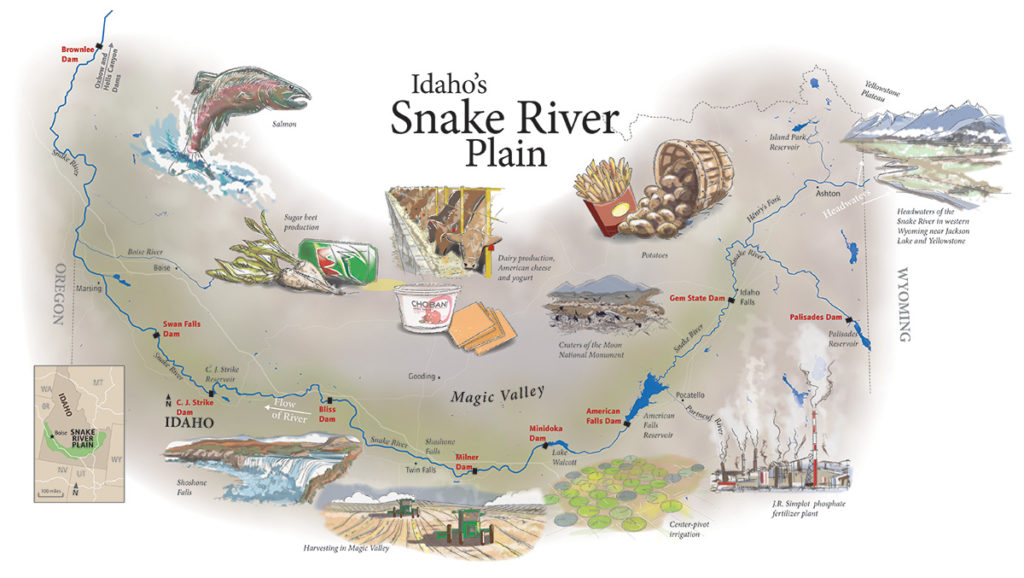
The feedlots of southern Idaho offer to the environment the equivalent in raw sewage of 17 million people, dwarfing the effects of the state’s 1.5 million human residents. And the dairy feedlots cause much more of this impact than an equivalent number of humans would because the feedlots do not have to funnel their feces through sewage treatment plants or septic tanks. Instead, they pump it onto the ground over the aquifer that is one with the river.
The manure is rich in pollutants – chiefly nitrogen compounds and phosphorus, but also various others including antibiotics, which feedlots pack into cows to ward off the sickness that inevitably results from confinement and a diet lacking pasture grass. Meanwhile, the farm fields are awash in pesticides, herbicides and fertilizer.
These pollutants flow through the porous volcanic soil into the groundwater and eventually into the river, but Idaho’s state government does almost no monitoring. Nor do the other governments that have jurisdiction, from the counties on up to Congress and the executive branch in Washington, D.C. Ag economist Gray is one of the few Idaho officials willing to admit publicly that the lax environmental regulations have been a primary reason for the dairy sector’s growth.
LINK (via: High Country News)





